PropTrack’s director of research, Cameron Kusher, lamented that younger Australians will never enjoy the same quality of housing as their parents, meaning their living standards are likely to be lower.
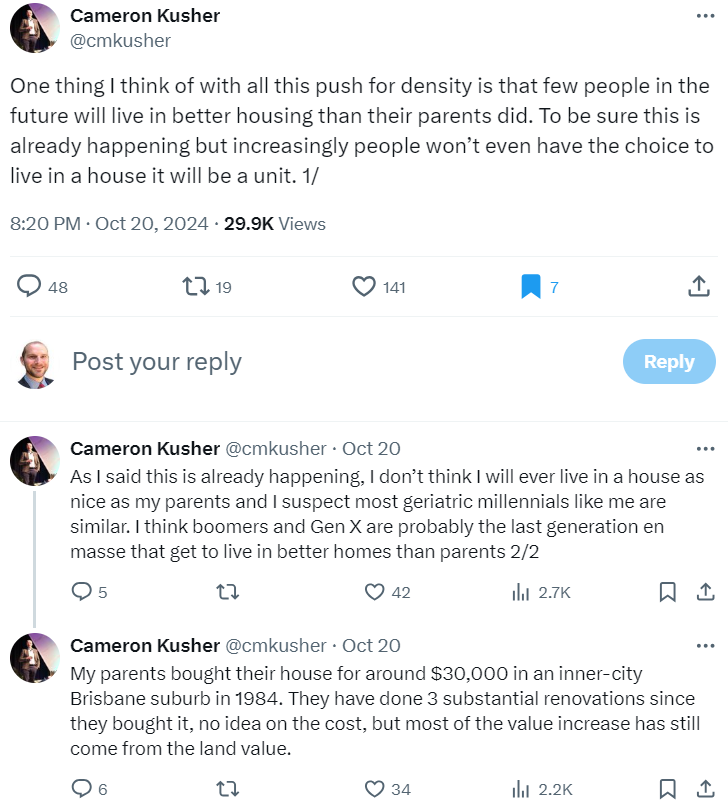
“One thing I think of with all this push for density is that few people in the future will live in better housing than their parents did”, Kusher wrote on Twitter (X).
“To be sure, this is already happening but increasingly people won’t even have the choice to live in a house it will be a unit”.
“I don’t think I will ever live in a house as nice as my parents and I suspect most geriatric millennials like me are similar”.
“I think boomers and Gen X are probably the last generation en masse that get to live in better homes than parents”, he said.
The shrinkflation of housing is the direct result of the federal government’s Big Australia immigration policy, which necessarily requires densification.
The federal government dramatically raised Australia’s net overseas migration (NOM) in the mid-2000s, as shown in the chart below, and this trend is expected to continue indefinitely.
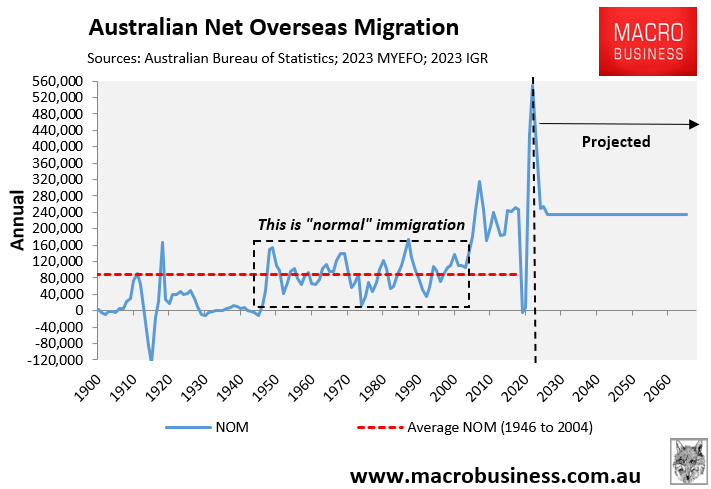
In the 15 years preceding 2004, Australia’s NOM averaged 91,000. However, from 2005 to 2019, Australia’s NOM averaged 220,500 per year, a 142% increase.
Even throughout the last four calendar years (2020-2023), Australia’s NOM has averaged 245,500 each year.
As shown in the chart below, Australia has experienced the largest population growth since 2005 among major industrialised nations.

The populations of Australia’s major cities also ballooned in size between 2001 and 2023.
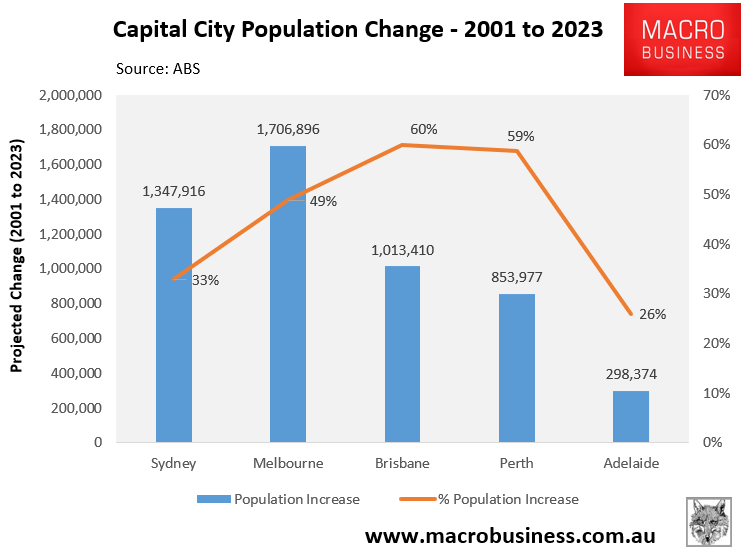
All major capital cities have experienced strong population growth, with Melbourne (1.7 million) and Sydney (1.35 million) seeing the largest increases in numbers, and Brisbane (60%) and Perth (59%) experiencing the greatest percentage growth.
According to Australian Bureau of Statistics (ABS) forecasts, Australia’s population will grow to 43.9 million by 2071, up about 16.5 million from 27.4 million today.
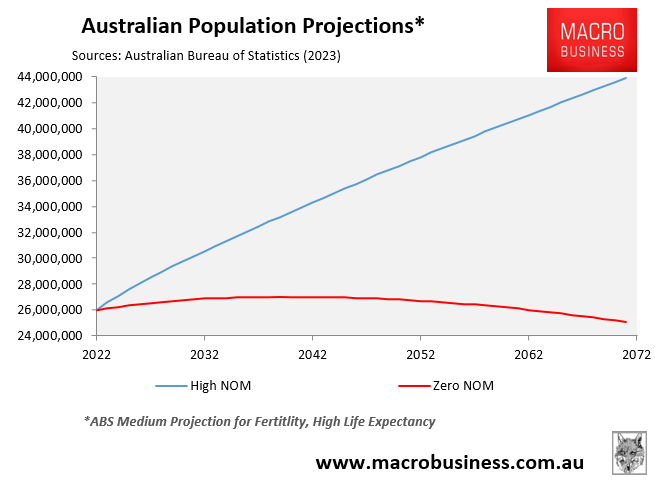
This is equivalent to adding another Sydney, Melbourne, Brisbane, Perth, Hobart, and Canberra to Australia’s current population in only 48 years!
To accommodate the predicted population growth, at least 7.5 million houses would need to be erected, with demolitions included. The majority of these will be in existing metropolitan neighbourhoods, resulting in the loss of more backyards to high-rise apartments.
It is also worth mentioning that Australia took 212 years to reach its population of 19 million in 2000. However, the population is anticipated to grow by an additional 24.9 million people in just 71 years!
The following chart compares the actual populations of Australia’s major capitals in 2001 to their expected numbers in 2071.
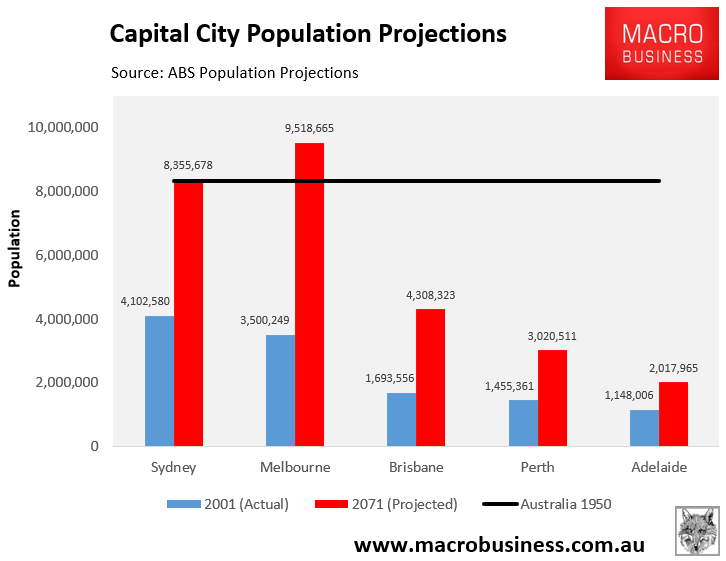
As you can see, Melbourne (9.5 million) and Sydney (8.4 million) are projected to have larger populations than the entire Australian population in 1950!
The following chart depicts the projected population increase by major capital between 2001 and 2071 in numerical and percentage terms.
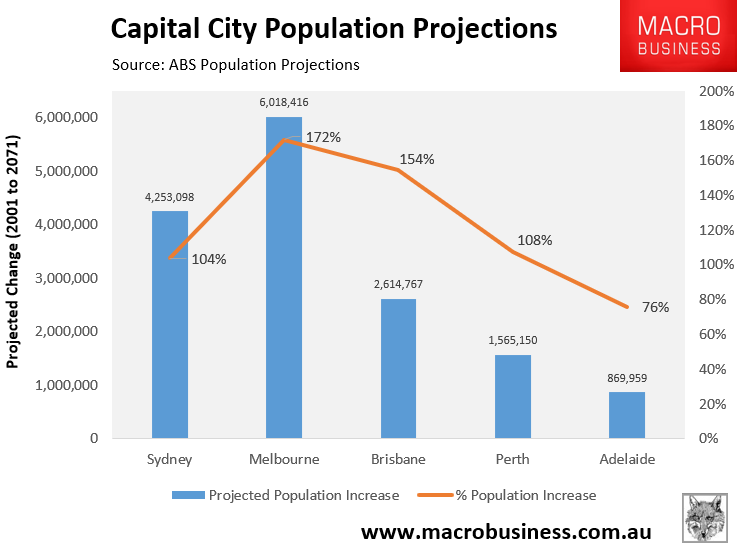
Melbourne is at the forefront of this unparalleled expansion, with its population forecast to increase by an astonishing 6 million people (172%) in just 70 years.
It’s no wonder that houses with backyards are being replaced with apartments. Extreme population expansion due to unrelenting net overseas migration inevitably means that the bulk of future residents will live in apartments rather than houses with backyards.
Indeed, the Urban Taskforce projected that Sydney’s dwelling composition will shift from 57% detached housing in 2016 to only 25% detached housing by 2057.
In contrast, the proportion of homes that will be apartments will increase from 30% in 2016 to 50% by 2057.
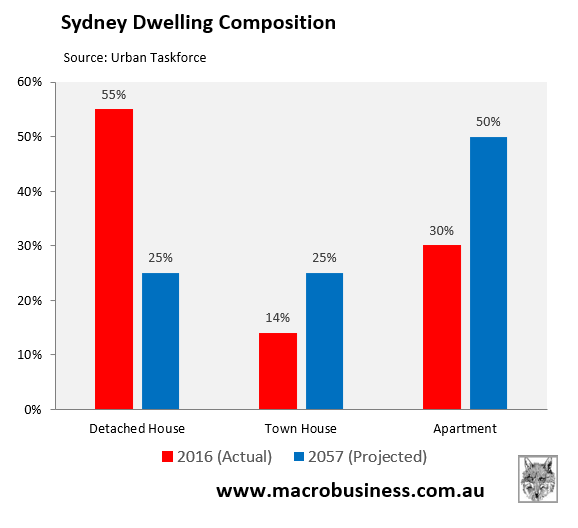
Melbourne faces a similar transformation given its population is projected to grow by an astonishing 6 million people in just 70 years (see above).
Again, housing shrinkflation is the direct consequence of the federal government’s Big Australia immigration policy.

